A war within a war: The battles fought by Gaza's medics
- Published
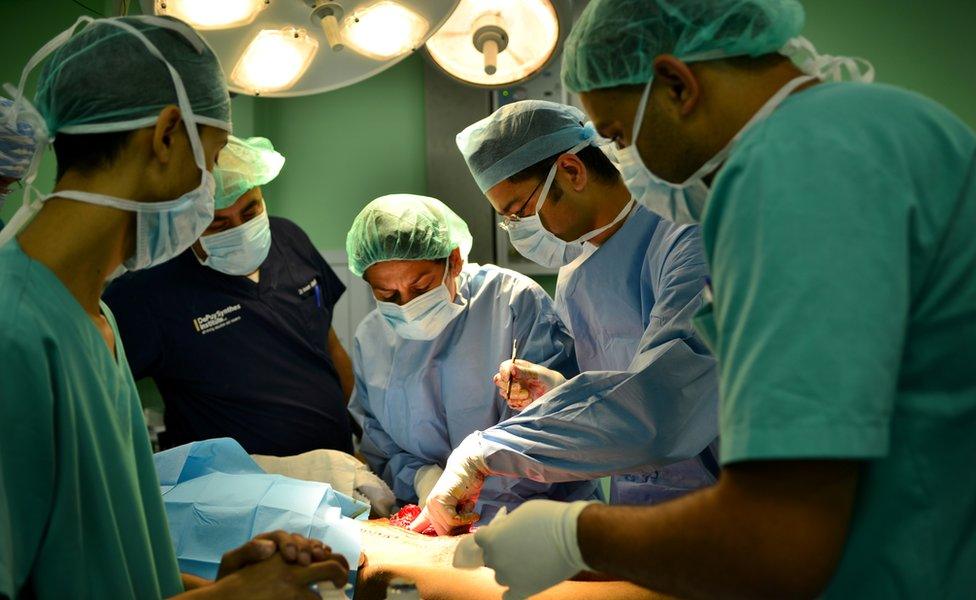
The huge task of rebuilding parts of Gaza after the recent war with Israel will be the focus of an international conference in Cairo this weekend. The 50-day conflict caused massive damage and thousands of casualties, overwhelming Gaza's hospitals.
Neither Dr Naveen Cavale or Dr Simon Calvert had ever seen anything like it.
The amateur video showed scenes of chaos - tens of doctors jostling from wounded to wounded; journalists with bulky TV cameras swarming around beds where dark red patches bloomed through patients' dressings.
Some casualties lay on plastic sheets on the floor, IV drips dangling above their heads.
"No hospital on earth is designed to cope with such a large and sudden influx of trauma like that. But if they had the procedures and protocol we have in London, they may be able to cope in such an emergency," Dr Simon said.
The seasoned surgeons were shocked by the footage of the emergency room of the Shifa Hospital - Gaza's busiest - on 31 July, when more than 200 injured Palestinians were brought through its doors.
They were part of a team of British doctors from London's King's College Hospital who travelled to Gaza to set up a programme for advanced limb reconstruction for victims of war injuries.
But neither Dr Naveen nor Dr Simon had ever been to the Middle East before, let alone a conflict zone.
The previous week, worlds away in the brightly lit and warm yellow of one of King's operating theatres during a routine procedure, a Nelly Furtado song playing on a radio in the background, plastic reconstruction surgeon Dr Naveen considered the trip ahead.
"I'm terrified of leaving behind my wife and two small children. But I want to do something like this. Someone with the skills that I've been trained with, working in a state-of-the-art facility like King's, ought to be able to transfer these to a place that needs it like Gaza."
Dr Simon, who leads King's trauma unit, said that despite his nervousness about going to Gaza, he felt a duty to his colleagues in the hospitals in the Strip.
"Medicine is a global community, and it's a responsibility of ours to help our colleagues in need of assistance," he said simply.
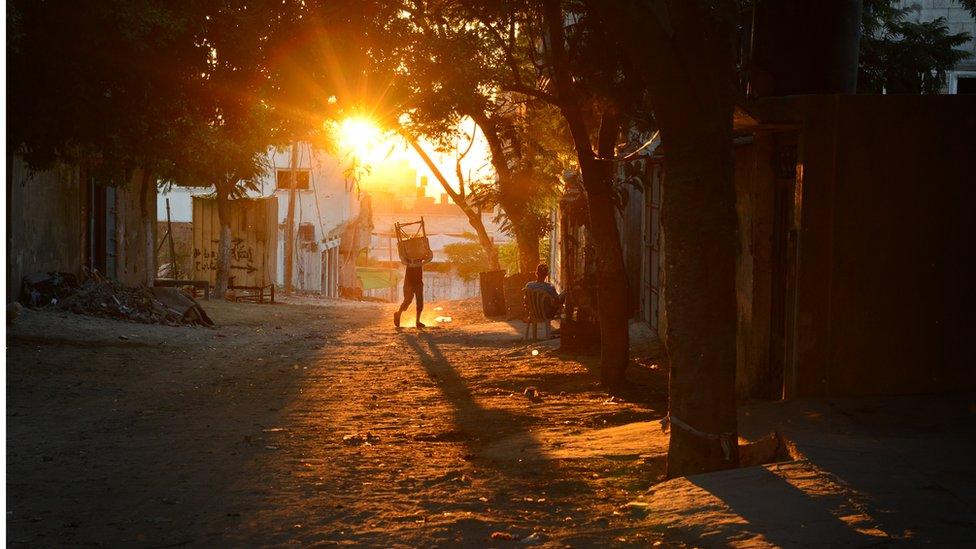
Gaza City's Shejaiya district was badly affected by the recent conflict, and many residents still choose to live in the ruins rather than in crowded shelters
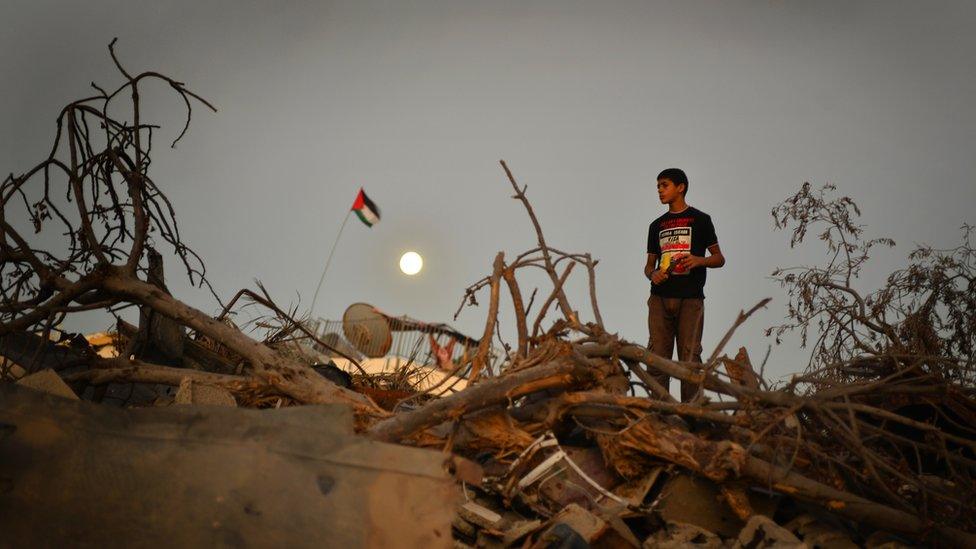
During the conflict many patients were discharged prematurely to make room for new arrivals - but some did not have a home to return to
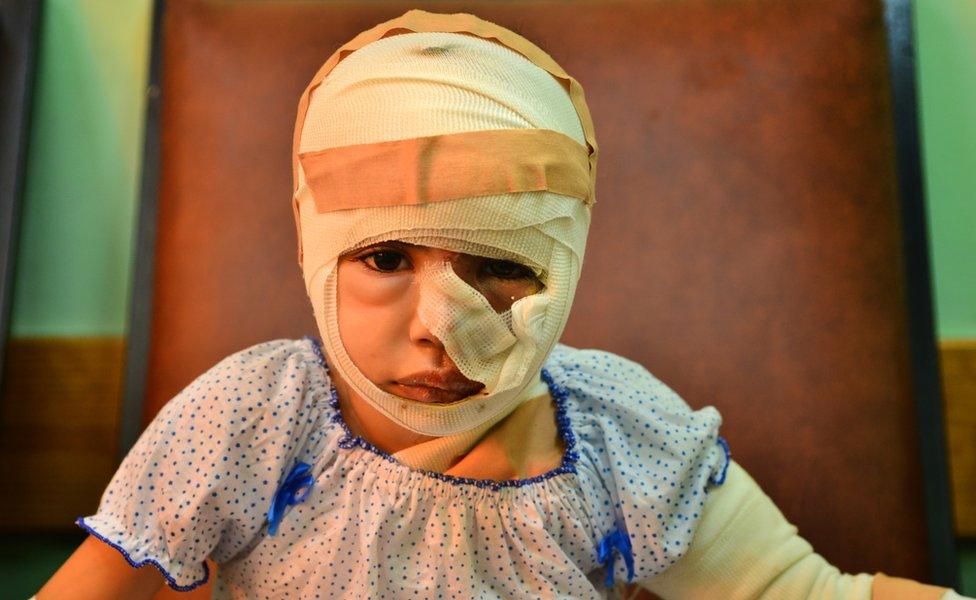
The most common injuries sustained in the conflict were trauma injuries resulting from shellfire or building collapses, and burns caused by the heat of blasts
Terrible injuries
The surgeons belong to the charity Ideals, and were sent to Gaza by Medical Aid for Palestinians to visit the main hospitals there to carry out assessments and to perform post-traumatic, reconstructive surgeries.
The Shifa Hospital in Gaza City is the largest, and yet it has only 583 beds.
Shifa hospital, Gaza
28%
essential medicines have run out
-
54% shortfall in medical basics such as gauze and breathing tubes
-
1,537 staff including 337 doctors and 495 nurses and midwives
-
583 total beds
-
11 intensive care beds
.jpg)
The human cost of the summer conflict with Israel was brutal: 2,104 Palestinians were killed and more than 10,000 people were injured in the small territory, and the chronically under-resourced Shifa was stretched to the brink in its response.
On the Israeli side, 67 soldiers and seven civilians were killed, with scores more wounded.
More than a month after the ceasefire, hundreds of Palestinians injured in the conflict are still struggling for their lives.
One of the most serious cases was that of Abdullah Abu Harbeed, a 24-year-old man, newly married to a young woman called Iman. Abdullah was injured in an air strike; most of the bones in his left arm were shattered after building debris fell on him. As he was getting up he fell on unexploded shell fragments.
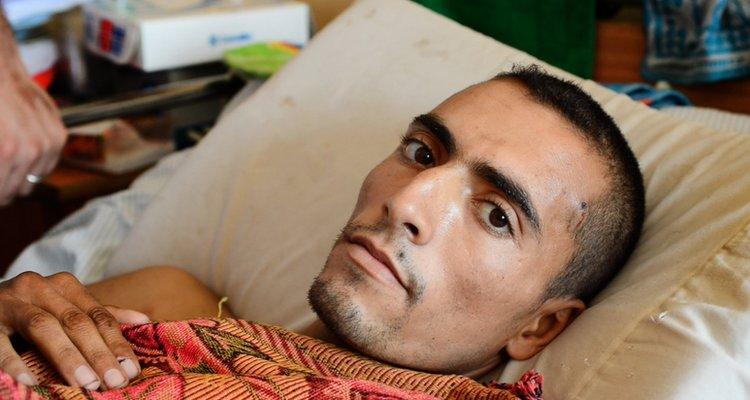
Abdullah's leg had to be amputated after he lost half his pelvis and a large amount of his femur in an explosion
The second blast ripped out half his pelvis, removing a third of his femur - the biggest, thickest bone in the body - and half his hip bone. A huge semicircle of flesh was carved out from his side, and nothing held his left leg to the rest of his body apart from mere inches of flesh.
That happened four weeks before the arrival of the British doctors. Confronted with such a complex case, their Palestinian colleagues were stuck.
Abdullah and his family were desperate not to have his leg amputated, and the surgeons at Shifa were unsure how to proceed in the face of stiff opposition from the patient.
By the time Dr Graeme Groom, the lead orthopaedic surgeon, and the rest of the British team arrived to meet and inspect Abdullah, flies were buzzing around the stained and dishevelled dressing.
His femoral artery, one of the largest arteries in the body, was visible, pulsing beneath barely a centimetre of tissue.
"If it were to break, there would be spurts of blood on the ceiling, and he would be dead in minutes," Dr Graeme said quietly.
In the operating theatre the doctors began cleaning up his wound, and discussing what they could possibly do to help him. The theatre was thick with the smell of rotting flesh.
"The trouble with a wound that big," Dr Naveen said, "is that it's basically like having a baby.
"So much blood and energy is diverted to the wound, feeding it, trying to heal it, that eventually your system wears out, your organs begin to fail and you will die. It's a miracle he's lasted this long."
In the end, there was nothing for it but to remove Abdullah's leg entirely from the top. Because there won't be any stump on which to attach a prosthesis, he will have to spend the rest of his life in a wheelchair.
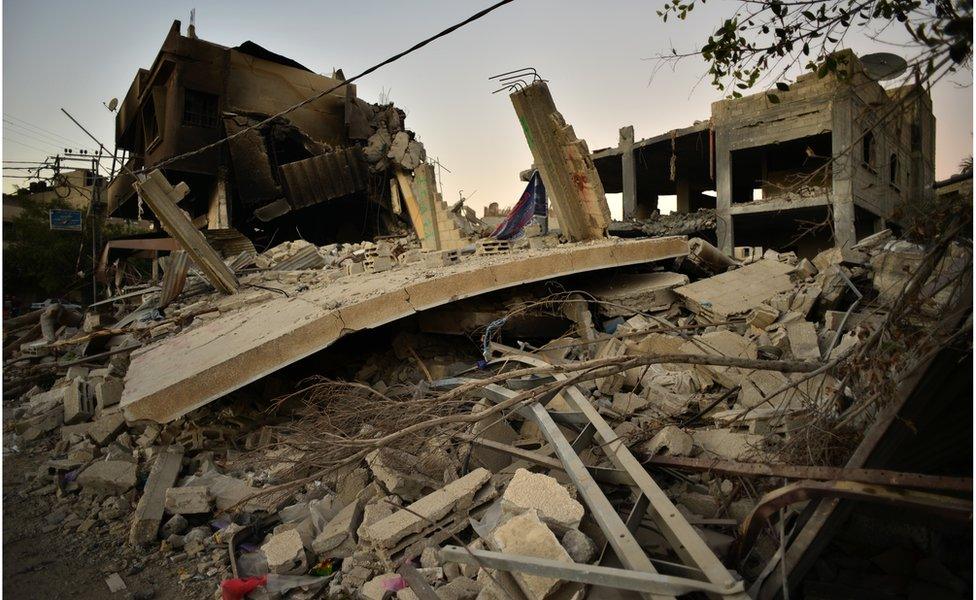
The Palestinian Authority estimates that rebuilding Gaza will cost $4bn (£2.5bn) over the next three years
Day-after-day
The nature of working in emergency services in Gaza is unlike many other places.
As is often the case when war erupts - or re-erupts between Israel and militants in Gaza - hospitals are stretched far beyond their operational capacities in every aspect: working hours, available beds, doctors and surgeons, medical supplies and hours of sleep.
Although there are 27 hospitals currently in service in Gaza, the majority of these are small, with limited capacity. Only three hospitals are able to manage major trauma - Shifa, and the Nasser and European Gaza Hospitals in Khan Younis.
.jpg)
Ahmad, 13, suffered a fractured foot in an air strike, but only required a relatively simple operation
During periods of bombardment this summer, Palestinian doctors worked for days on end. The threat of air strikes prevented many from going home.
Dr Raed Nawas, a plastic and trauma surgeon spoke of the never-ending torrent of injured people arriving at Shifa, and the days and nights he worked without pause. He was not able to return home to see his family for more than 30 days.
Doctors at Shifa spoke of some of the worst days, where patients had to be operated on whilst lying on plastic sheets on the floor, with surgeons crouching around them to the sound of falling shells in the background.
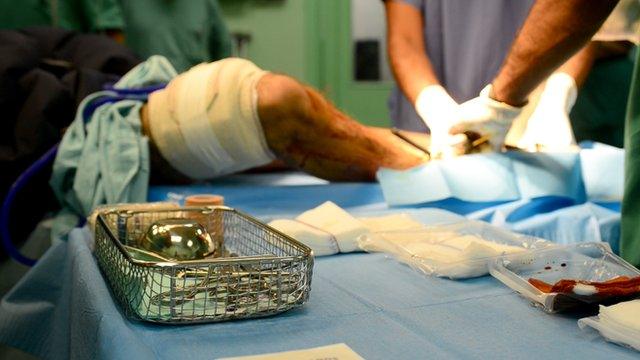
Only three hospitals have the capacity to handle major trauma; one in Gaza City and two in Khan Younis
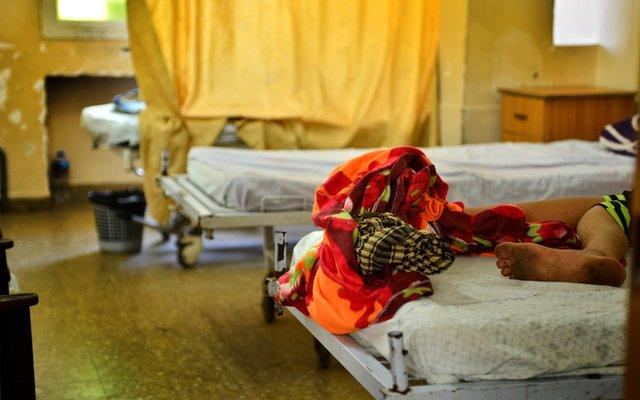
Medical supplies are often running low at Shifa hospital and often generators are the only power source
The British team found that while the standard of medical practice by doctors in Gaza was very high, most surgeons were general practitioners, and the Strip lacked the focus on specialisms intrinsic to medicine in the West.
Unlike the surgeons of King's, surgeons in Gaza begin work far earlier after finishing higher education.
Expense, lack of funding and imminent need for practising doctors means the surgeons of Gaza miss out on years of dedicated focus on training and research.
.jpg)
Khalil, 27, will need to have his foot amputated after losing his heel bone in an explosion
The nature of injuries that most often occur in Gaza during conflict with Israel are very traumatic wounds typical of wars, from lacerations resulting from shellfire to traumatic injuries caused by building collapses. The injuries also cut across a whole range of age groups, from children to the elderly.
More than half of Gaza's population is under the age of 18, according to the World Health Organisation (WHO), and yet there is not an adequate number of doctors specialising in paediatrics.
However, as talks between Israelis and Palestinians to shore up the truce agreed in August continue in Cairo, there is a chance for medics to focus on the long-term needs of their patients in the absence of war. The fighting may have stopped for now, but for some injured Palestinians the battle for their lives continues.